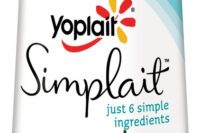Over the years, I have written about the need, value, opportunities and approaches for innovation in the fermented dairy foods category.
In September 2010, I highlighted how the cultured dairy products industry could deliver on health and wellness with a new generation of products. In September 2014, my theme was how a few entrepreneurs connected the dots and linked the market forces that resulted in the successful introduction and growth of Greek-style yogurts. I also suggested that higher-fat products might just be the next big thing in cultured products. In December 2016, I highlighted sustainability as a driver of consumer choice among millennials.
Let’s learn from Detroit. What do all automobiles have in common? Four wheels, brakes, an engine, a steering wheel and seats. But these are prerequisite attributes and not what drives final purchased decisions. Detroit’s automakers nearly handed the market to overseas competitors. Fortunately, U.S. automakers woke up; Detroit learned from its rivals and made autos for a greater variety of different uses.
Through extensive R&D investments, Detroit designed and offered more affordable, reliable, fuel-efficient and lower-emission (ecologically friendly products) vehicles. Automakers developed customized products for different consumers: families (large and small), professionals, younger drivers and older couples. They developed and offered cars with many different style statements – powerful, ecologically minded, wealthy, sexy, safe, sophisticated, and fun-loving.
While a cup of yogurt or a dollop of sour cream may not be able to innovate to achieve all changing lifestyle trends and needs, you get the point. Not innovating equals commodity, stale product offerings and product obsolescence. Smart product innovation results in offerings that can evolve with a varied and changing marketplace and translates to healthy sales and profitability.
What’s happened over the years in the cultured products marketplace? From 2005-2015, mostly driven by innovative Greek yogurts, U.S. yogurt consumption grew from 10.4 pounds/capita to 14.7 pounds/capita (a 41% increase), reflecting overall yogurt sales of $7.5 billion in 2015.
Greek yogurt manufacturers used innovative technologies to capture changing consumer needs for protein nutrition, simple ingredients, high-quality flavors and convenience. Manufacturers have also begun to capture consumer interest in drinkable yogurts, which are seeing double-digit sales growth.
Recently, dairy processors are introducing yogurts with claims such as “made from milk obtained from grass fed cows,” higher-fat yogurts for different eating occasions or for consumers who seek fat, and a wide range of novel ethnic and exotic flavored yogurt products.
Hits and misses
Other cultured products sales have been less stellar. Sour cream has experienced some growth (from 3.5 pounds per capita in 2005 to 4.09 pounds per capita in 2015). Unfortunately, cottage cheese consumption continues to drop (2.65 pounds per capita in 2005 to 2.12 pounds per capita in 2015).
While there has been some innovation in sour cream and cottage cheese, no truly “breakthrough” innovation like Greek yogurt or extent of flavors and other product innovation positions have been launched.
Timing matters
With any product innovation launch, timing is everything. Keep trying and stay committed to the value of the innovation process. Remember: those companies early to market usually gain some market learnings, and if this information is used effectively they can reap the greatest returns from their investments.
Additionally, if you traveled to Europe or other parts of the world and looked in the dairy case, you will see the variety of product offerings in cultured dairy foods. Some might say we have much to do in product innovation. We can “Americanize” what we see around the world and make it a win for our cultured products industry.
Innovation in cultured dairy products is not for the weak and is not an isolated event that should just be a one-time checkbox in your operation. Innovation is an ongoing process that requires patience, timeliness and commitment over the long haul. Because we live in a dynamic world with consumers whose needs evolve with the changing times, cultured dairy products innovation is an essential activity for your business. You must maintain a portfolio of product offerings that have consumer relevance and interest in a highly competitive environment.
Tomorrow’s consumers will have different backgrounds, taste preferences, eating habits, purchasing habits and values that will influence what they are motivated to buy, use and consume.
Consumers will continue to seek out more “healthy” products. And do not forget the eating experience – it must be pleasurable! All these trends and likely some other new trends bode well for those committed to innovation.
So, while I might sound like a broken record at times, I hope to keep bringing attention to innovation as an ongoing and important part of your overall cultured products effort.



